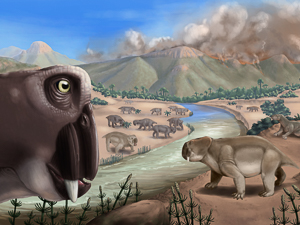
Earth’s biggest mass extinction lasted much longer on land than in the sea
April 19, 2021
Illustration of the Karoo Basin during the mass extinction at the end of the Permian, some 252 million years ago. The protomammal Lystrosaurus shown in the foreground. Lystrosaurus is what paleontologists call a “disaster taxon” — a group that thrived during a time when most other life was struggling. Illustration: Gina Viglietti. Our planet’s worst… Read More >
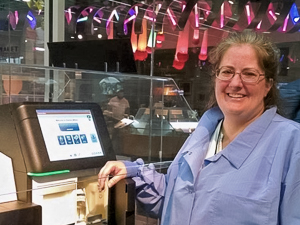
Becoming a scientist: My journey to the Museum
April 15, 2021
By Marianne Barrier, PhD; Lab Manager, Genomics & Microbiology Research Lab I’m amazed when I hear stories of individuals who knew at a young age exactly what they wanted to do and followed their passion straight into their chosen career. My path has been more of a winding road with lots of interesting side trips… Read More >
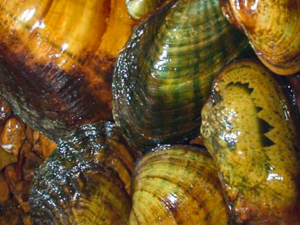
Bogan’s BioScience paper reaches 1,000 citations
The loss and decline of many charismatic vertebrate species such as mammals and birds, and even of perhaps less-charming creatures such as amphibians and reptiles, has been documented and prominently featured in the popular media. However, many invertebrate species, which comprise nearly 99 percent of all animal diversity and occupy an important trophic level in the… Read More >
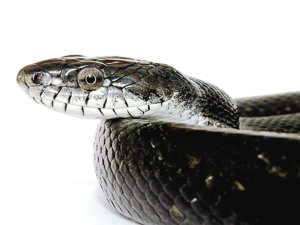
‘Short but sweet’ report sites new predator of Green Salamanders
April 8, 2021
Eastern ratsnake (Panterophis alleghaniensis). Photo: Jeff Beane/NCMNS. A recent discovery published in Herpetological Review may be short, but as co-author Jeff Beane points out, it’s still very important. Why? “Because it documents a couple of unusual things,” says Beane, the Museum’s Collections Manager for Herpetology. Green salamander (Aneides aeneus). Photo: Jeff Beane/NCMNS. New Predator of Green Salamanders… Read More >
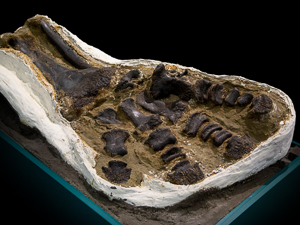
Dueling Dinosaurs Exhibit Update
Museum guests will get their first look at the Dueling Dinosaurs beginning Tuesday, March 30. On the second floor of the Museum’s Nature Exploration Center (NEC), an enormous foot belonging to our Triceratops will be displayed as fossil in matrix, while a foot of the tyrannosaur will be displayed in replica. The selected portions of… Read More >

